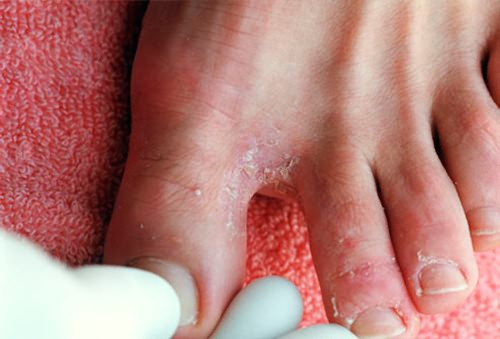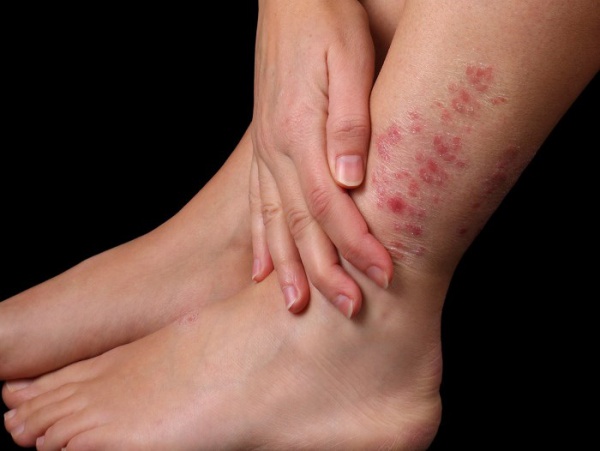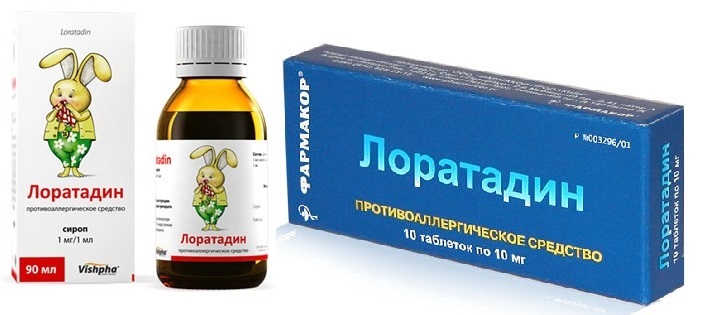An allergic rash on the legs is a fairly common phenomenon, and its symptoms are the most diverse. This may be a slightly noticeable rash on the lower extremities, hyperemic spots in the feet, as well as erosive formations and a crust characteristic of dermatosis.
Allergy on the skin of the legs manifests itself in different ways: it can be visible immediately after interaction with the allergen, have a gradual increase in symptoms. Regardless of where in the legs it occurs and what the period of the inflammatory process is, a person has a lot of inconvenience and problems associated with limited mobility. Most often, allergies on the feet interfere, since it is on this part of the lower extremities that a person has to step in the first place, this process is quite painful, therefore it is so important to recognize the first symptoms of the disease and take appropriate measures to intercept painful symptoms.
Types of allergic manifestations
All manifestations that have arisen on the legs due to an allergic reaction can be attributed to several types:
- Urticaria is usually caused by an external pathogen and contact with it. As a result, blisters of various sizes appear on the skin, which itch and burst.
- The rash also varies in size and shape. It is observed when interacting with stimuli of both external and internal properties. Here the provocateurs can be both food and clothes or shoes.
- Dermatitis is an inflammatory process on the skin that appears after prolonged exposure to the allergen on the body or when it is too concentrated. Diabetes mellitus and varicose veins are those diseases that play a negative role in the development of this disease. Any symptoms of allergic dermatitis should be treated with caution if these serious ailments are present.
- Allergy to low temperatures. Often in severe frost, people may experience a similar reaction, in which the legs begin to itch, especially the hips and ankles. It is temporary and disappears after the body has warmed up.
What is the cause of the disease?
The reason lies in one or another allergen that irritates the skin, can penetrate deep into the epidermis and become a real disaster for the patient himself and his loved ones, especially for children.
First of all, fungal diseases, as well as disorders associated with the circulatory system, should not be attributed to this disease. Although, the symptoms may be similar: redness on the skin also appears and itching appears.
Among the most common causes of allergies in childhood is intolerance to certain foods. In a baby, you can often see a rash on the legs after milk. A similar reaction is most often seen on the legs during the start of complementary feeding, when the mother gradually begins to give the child liquid porridge based on cow's milk. In order for the problem of leg allergies not to develop into persistent diathesis, you should stop giving the product and do special tests, after which you can adjust the diet. Often mothers dilute whole cow's milk or replace it with goat's milk.

The main triggers for allergies are:
- dust contained in carpets, furs, bedding or upholstered furniture structures. Dust mites are the main causative agents of allergy attacks in adults and children. In order to prevent such phenomena, you should clean the apartment more often, at least once a week: do a wet treatment of all surfaces, wash curtains and carpets, clean the soft surfaces of furniture with the help of special tools, and ventilate the room as often as possible;
- animals very often become the cause of allergic diseases. If an adult develops an allergy on the legs, contact with pets should be limited. A special point should be highlighted the rules of conduct for women who are carrying a child. You should be careful not only with pet hair, but also with food for aquarium fish, since even such harmless creatures can cause severe attacks. Insect bites also belong to this group;
- chemical materials. Allergy on the foot in an adult can occur due to the wearing of synthetic materials from which socks, tights, and shoes are made. Material, dyes are potential allergens, since the reaction of the body and its severity depend on the production technology, chemicals, processing of materials;
- vegetable crops, indoor plants or fluff from flowering trees and bushes growing outside, all these external factors are a potential threat to people suffering from chronic allergies;
- fungus can cause an allergic rash, peeling on the skin of the feet and on the toes. In this case, complex treatment is used using antihistamine drugs and antifungal drugs.

Foot allergy symptoms
It should be noted that the reaction in this kind of allergy is instantaneous, especially in children. It doesn’t even take three hours after contact with the allergen has occurred, and all the signs of the disease are already “on the face”. Most often, the lesion is immediately visible on the feet, hips and in the shin area.
- among the most common symptoms are hyperemic satiety, peeling and severe dryness of the legs . Red spots on the legs appear in different forms: dotted, in the form of spilled foci and protruding above the surface of the skin;
- red spots on the legs itch strongly, can merge and form rather large foci. They extend to nearby tissues, have various shades, from pinkish to red. This phenomenon can most often be seen on the feet of children;
- swelling often occurs, especially in the foot area, this is due to the fact that fluid begins to accumulate under the skin. Edema does not hurt, but it interferes with movement, especially if it forms between the fingers. As a rule, puffiness is localized and is noted only in a certain area;
- itching appears earlier than other signs, it is a warning about the beginning process. If you start scratching the itchy parts, then the itching begins to increase, measures should be taken to stop this phenomenon. Children often scratch their feet until they bleed, not realizing that by doing so they provoke even more of its occurrence. It is dangerous for her and the fact that an infectious disease can be provoked through the hands and nails.

allergies during pregnancy
During pregnancy, the body of women is rebuilt, many hormonal functions change, hence allergic reactions to familiar and favorite foods are quite natural. This reaction is understandable and natural.
Allergies on the feet and other parts of the legs of a woman carrying a baby most often occur in the second or third trimester, when the skin undergoes changes in the form of stretch marks on the legs, abdomen, and back.
At such times, you need to be especially careful not to cause an infection from blisters, rashes or pimples that tend to burst.
Often during the third period of pregnancy, women suffer from edema that occurs on the legs. Any change in the color of swelling and its spread to the limbs requires the intervention of a specialist and drug therapy.
Allergy is dangerous not only for the expectant mother, but also for her unborn baby. He is able to inherit this disease at birth, so it is important for the mother to maintain a proper diet and well-being.
How to treat?
Getting rid of allergies in the lower extremities does not differ from the treatment process of other allergic manifestations. If you do not start acting on time, the rash can penetrate into the dermis, into deeper structures. Then flaws in the form of scars and scars may remain on the skin.
A timely visit to a dermatologist or an allergist will stop the painful process and stop the inflammation in time. During therapy, antihistamines are prescribed, such as: Suprastin, Claritin, Loratadin. Ointments are also used to treat the affected areas.

It is necessary to exclude highly allergenic foods from the diet, and switch to a special diet. Among the products of provocateurs, one can distinguish in a special way: citrus fruits, chicken eggs, milk, tomatoes and all products of bright color. Preferred during the period of exacerbation will be cereals on the water, vegetables such as cabbage, zucchini, herbal teas.
If the disease is complex, hormonal drugs may be prescribed.. This method is used exclusively for adults and if, for an extended period, traditional antihistamine therapy has not brought positive results. For the treatment of children from allergies in the legs, this method of therapy is contraindicated.
In case of relapses, you should undergo a complete examination and, together with a specialist, think over a further lifestyle:
- Adjust nutrition.
- Replace clothes and shoes, excluding synthetics.
- Avoid contact with animals and other measures.
- Observe personal hygiene and cleanliness of the house.
- Treat fungal diseases, if any.
Getting rid of allergies is possible only with an integrated approach, following all the above tips. It is necessary to increase the protective properties of the body in every possible way. An allergic reaction in the legs can be a consequence of a weakened immune system. This topic is especially relevant in childhood, when the child is under six years old. At this time, a small person has not yet formed his own personal immunity, and it is difficult for a fragile body to cope with irritating factors in the form of bacteria and allergens.
For an adult, clean clothes, comfortable natural shoes, environmentally friendly food and a minimum of household chemicals are important. Subject to all these rules, it becomes possible to protect your body from negative consequences and unwanted intrusions from irritating substances.

